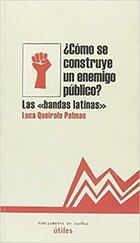
What are the boys and girls who enter the "Latin gangs" looking for? Surely this question is the one that matters the least to those who are in charge of the "phenomenon": press, politicians, academics, police, social services. How a public enemy is built is an ethnography of the state. It examines, based on Bordieu and a long tradition of critical studies, how each of the parties involved in the creation of that object called "Latin bands" acts and what gets obtained. The press sells newspapers generating social alarm. Politicians get votes with promises of security. And educators and police officers strive for more legitimacy when regulating social problems. The "Latino gangs" are thus turned into a "public enemy", but they also cease to be when it suits these actors. Meanwhile, a few boys and girls enter and leave these groups, they live their life, often complicated, seeking respect.







